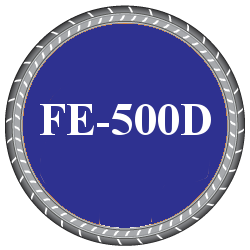

SANJOG SONA TMT confirms with Fe500D specifications thereby having greater ductile strength than the Fe500 TMT bars. In Fe 500D, the term “Fe” denotes Iron,”500” stands for the minimum yield stress in N/mm2 and the letter “D” denotes that such bars have higher values of ductility (higher UTS/YS & % Elongation). These bars have lower percentages of sulphur and phosphorus which are harmful for steels used in construction. Higher sulphur leads to “Hot Shortness” wherein the melting point of steel is lowered, leading to failure under extreme high temperature conditions. Higher phosphorus leads to “Cold Shortness” wherein the steel becomes brittle under extremely cold conditions and leads to cracking. Also, the value of Carbon percentage in these bars is low to improve the ductility and weldability of steel.
Comparing Fe500D TMT bars with Fe500 TMT bars, the Tensile strength of steel remains the same for both these products. However, it is the overall ductility that makes all the difference. Ductility is the ability of the material, to plastically deform and adapt while being stressed with a tensile load. When a piece of ductile material is pulled, before rupture (breaking apart), is will deform, change its shape to adapt to the stress. This feature provides the SANJOG SONA Fe500D TMT bars with greater capacity to absorb sudden loads.
FE 500 D Steel Bars Chemical Properties as per BIS Specifications
| Chemical Properties | IS 1786 Fe - 500 (% Maximum) | IS 1786 Fe - 500 D (% Maximum) |
|---|---|---|
| Carbon | 0.30 | 0.25 |
| Sulphur | 0.55 | 0.04 |
| Phosphorous | 0.55 | 0.04 |
| Sulphur & Phosphorous | 0.105 | 0.075 |
FE 500 D Steel Bars Mechanical Properties as per BIS Specifications
| Mechanical Properties | IS 1786 Fe - 500 (Minimum) | IS 1786 Fe - 500 D (Minimum) |
|---|---|---|
| 0.2% Proof Stress | 500 N/mm2 | 500 N/mm2 |
| Tensile Strength | 545 N/mm2 | 565 N/mm2 |
| UTS/YS Ratio | 1.08 | 1.1 |
| Elongation | 12% | 16% |